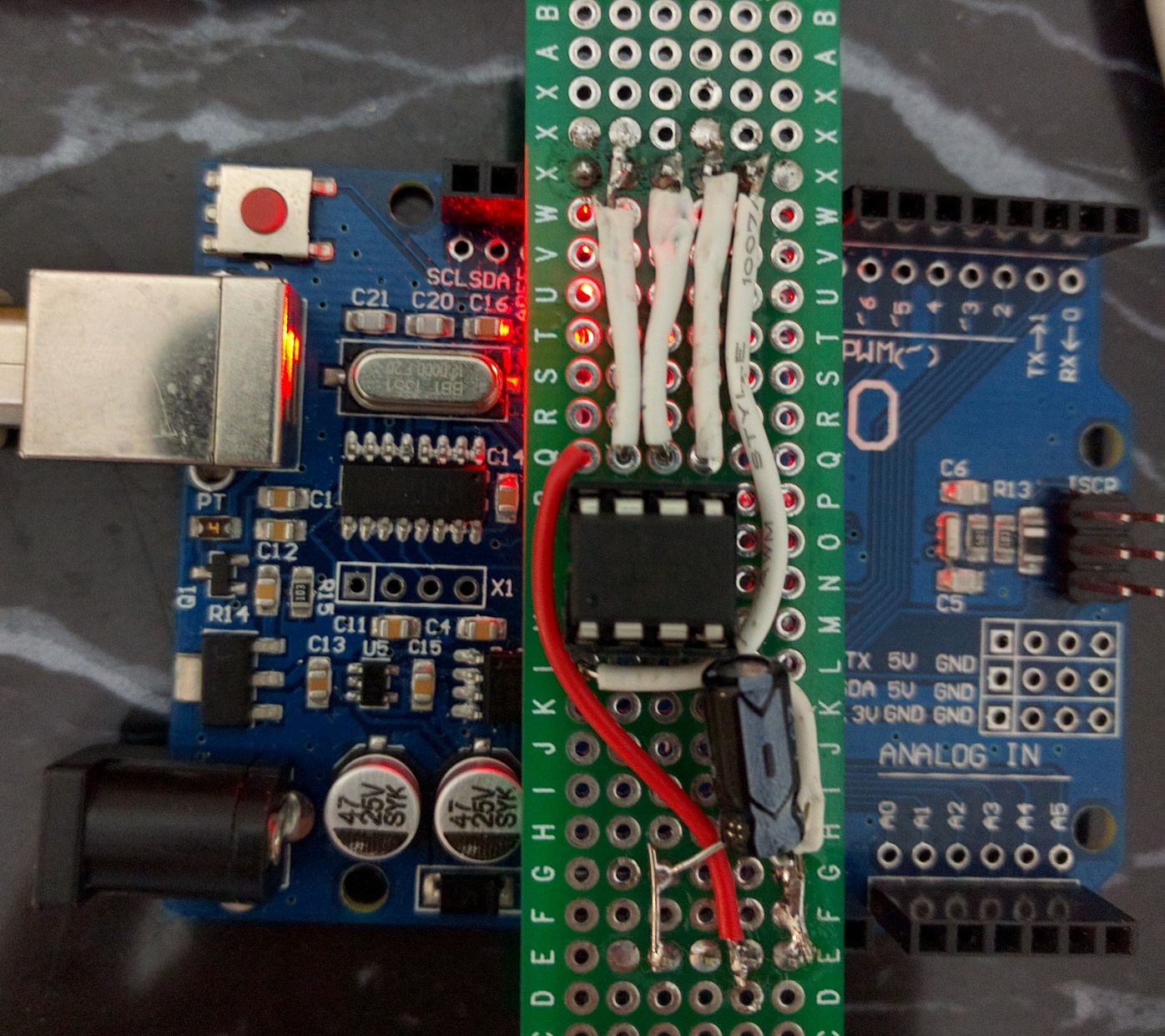Arduino Hx711 Weight Scale Interface 1 0 Software

Mar 2, 2017 - We are building the same Weighing machine by using Arduino and Load. Weight by interfacing Load Cell and HX711 Weight Sensor with Arduino. We have written a Arduino program for whole process, check the Code. SetCursor(0,1); lcd.print(' Measurement '); delay(1000); lcd.clear(); calibrate(); }. Arduino Hx711 Weight Scale Interface 1 0 Software. 3/27/2018 0 Comments I am working on an application where i need to convert the weight of a person to calculate and use it for other parameter. So i started searching the internet and found many tutorials using the load cell and arduino. I started by opening up a bathroom scale and using the.
Hi guys, I found the HX711 and was curious if it could work for one of my projects which currently uses other ADC. This 24 BIT ADC has 2 differential inputs for 2 load cells. In the end I need 4 load cells so that means the use of 2 x HX711. All the code I found is only refering to measuring one load cell on the A- and A+ input instead of two. The output for communication is fed to the A0 and A1 analog inputs. Now would it be possible to have two of the HX711 connected to an UNO and read all the load cells to a serial print function. The data needs to be ported to a PC by USB.
So the second HX711 connected to A2 and A3. Would the hx711.h libary need to be adapted or can I change the libaries name for example hx711-1 and hx711-2 and both use in the same sketch? Any tips or trick if this could work would be appriciated.
NY, I studied the datasheet. Table 3 and figure 2 are conflicting where table 3 is correct and figure 2 contains channel B at 64 gain which should be channel A 64 gain. Understand now that pulses 25,26,27 determen which data is send out from the HX711 and which gain should be used.
But my knowledge at this moment fails to see how I can read the data to the MCU othe rthen the sample codes. I have no clue if the current available.h and.cpp files are designed to get also the B channel data. In all samples only one value is displayed Serial.print(scale.getGram(), 1); Serial.println(' g'); or do I understand wrong? Yep I found that Lib this afternoon too. Still do not fully understand it all but I ordered two of these babies and when they are in I first gonna check with this lib if I can get it to work on A channel and then see if the B channel can be trapped too into a println function to get the data over to the PC. It looks like all only use the A channel to be captured or am I missing something then? Then comes the trick to read four channels.
One channel at the time.for now. All the hardwork will be done like tarre and zeroing in the PC. I only need the raw data (milivolts). Maybe at a later stage I will see if I can adapt with Blue Tooth and an Android app to get the data the same way as on the PC by USB. First I have to understand what goes on.
I have not looked at the library, but it sounds to me like it needs modifying to allow you the option of which IO lines you want to use for each HX711 object. That way you only need one set of library files and when it gets initialized, for example, for the first hx711 you assign it A0 & A1, then for the second kx711 object you assign it A2 & A3 (similar to the OneWire library or most other libraries that can use any IO). You may also need to add the ability to request data from channel B.
Take note that chB has a fixed gain of 32 and chA can be either 128(default) or 64. Your weight calculations will have to be adjusted for that.

Want to weigh something with uncanny precision? Use a Load Cell and an HX711 detector and you're in business! All will be explained. And it is so very easy you will be amazed.
Umzch vv 2014 poslednyaya versiya pc. The sketch can be found here on my GitHub: Calibration and seed-setting sketches can also be found here: The library can be found here: And if you use an Arduino Micro or Sparkfun Pro Micro what do you have to guard against if you don't want a 'bricked' Arduino? Watch to find out. Yes, it happened to me, don't let it happen to you.
And what has the postman delivered lately? A stepper motor, an Arduino Mega, an RFID. Well, watch and find out. And for the completion of the LOAD CELL project don't miss the next video part 2 which will concentrate on the way I've mounted the hardware, the software with some simple demo code - easy. That's all coming in Part 2 (video #32). Link to the load cell (500g) that I bought: As always, Thanks For Watching and don't forget to subscribe so you don't miss future episodes.